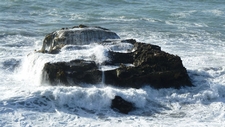Solids and Liquids

TEKS Objective
Classify matter by physical properties, including shape, relative mass, relative temperature, texture, flexibility, and whether material is a solid or liquid.
Essential Understanding
The student knows that matter has physical properties and those properties determine how it is described, classified, changed, and used.
Science Background
Introduction to Matter: Chem4Kids.com (website) - Refresh your high school or university knowledge about the states of matter with this user-friendly website.
Introduction to Matter
Chem4Kids.com, www.chem4kids.com
Introduction to Matter: Chem4Kids.com (website) - Refresh your high school or university knowledge about the states of matter with this user-friendly website.
- Read about the physical properties of solids.
-
Read about the physical properties of liquids.
Introduction to Matter
Chem4Kids.com, www.chem4kids.com
Signature Lesson
Properties and Changes in Matter: South Carolina Support System (PDF) - Students investigate solids and liquids in a series of lessons by making observations about the properties specific to each type of matter.
Properties and Changes in Matter
South Carolina Support System, www.scde.mrooms.org
- Supporting Lessons
- Extensions
- Assessment Ideas
- Literature Connections
- Related
TEKS - Additional Resources
Supporting Lessons
What Makes Water Special: BioEd Online (website) - Students investigate different properties of water and oil and make observations about liquids.
Elaboration Lessons and Extensions
Solids and Liquids Science Essentials: Channel4Learning (website) - Downloadable worksheets on which students can record observations about solids and liquids. An image bank is also available.
Solids and Liquids Science Essentials
Channel4Learning, www.channel4learning.com
Assessment Ideas
Testing Time: CATIE for Schools (website) - Use this interactive to assess students’ ability to classify different household items as solids or liquids.
Literature Connections
Solids, Liquids and Gases, Ontario Science Centre (ISBN-13: 978-1550744019)
Additional Resources
Solids and Liquids: BBC Science Clips (website) - Students observe virtual objects melt or freeze.
TEKS Navigation
Grade 2
Need Assistance?
If you need help or have a question please use the links below to help resolve your problem.

Comments